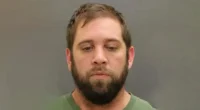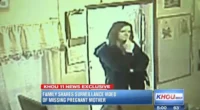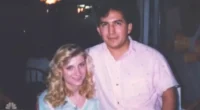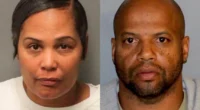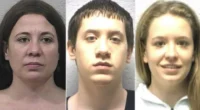From 1971 to 1984, some hospitals in the United States began to realize that the number of child deaths had exceeded acceptable levels. These were all places where nurse Genene Jones worked, and she was somewhat involved in the treatment process. However, instead of thoroughly investigating, they simply asked Jones to resign. It’s estimated that up until her arrest, around 60 innocent children had died at the hands of this cold-blooded nurse. The motive behind this was later revealed, shocking the public.
The Talented Nurse
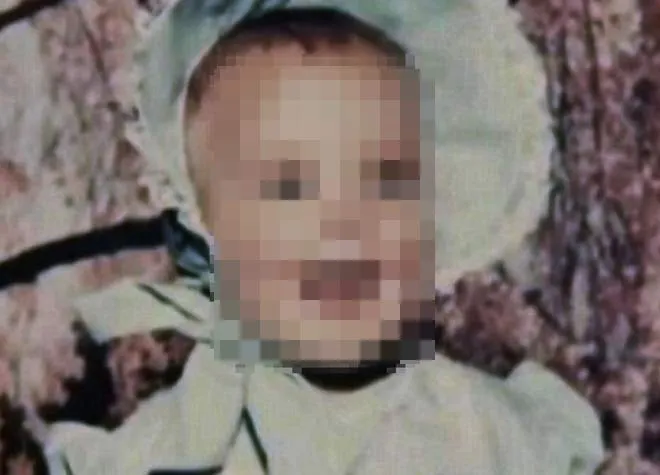
On September 17, 1982, Petti McClellan brought her little blonde-haired, blue-eyed daughter to a pediatric clinic. This clinic had just opened in Kerrville, Texas, the day before, not far from where she and her family lived, and Chelsea McClellan was its first patient.
Little Chelsea was only 8 months old and was suffering from a cold. Being fragile since birth due to premature delivery, with underdeveloped lungs, she was prone to infections. Therefore, she always needed to use the hospital’s ventilator.
Shortly after, nurse Genene Jones took the child to another area to play while Dr. Kathleen Holland spoke with the mother. But not long after, Jones hurriedly came to inform the parents that Chelsea seemed to have stopped breathing. The nurse quickly placed an oxygen mask on the baby’s face, and they rushed Chelsea to the emergency room of the nearby Sid Peterson Hospital.
Thanks to the nurse’s quick actions, emergency treatment was given in time, and Chelsea survived the critical moment, gradually recovering. Chelsea’s parents were very grateful to Jones for her actions. The incident was later spread among parents, who affectionately called Genene Jones the “angel nurse.”
Nine months later, the family brought Chelsea back for a routine check-up. But this time, tragedy struck.
Unexpected Death
After examining Chelsea’s condition, Dr. Holland prescribed two supportive injections. However, shortly after nurse Jones administered the first injection, Chelsea began to struggle to breathe. Seeing this, McClellan requested her to stop, but Jones proceeded with the second injection. After this injection, Chelsea went limp and gradually stopped breathing.
An ambulance was called to take Chelsea to Sid Peterson Hospital. Nine minutes after the ambulance arrived, Jones carried the child swiftly to the emergency vehicle. While in the ambulance, Chelsea stopped breathing once again. Jones continued to administer something to her while Dr. Holland performed CPR, but to no avail. By the time they reached the hospital, Chelsea’s heart had stopped beating.
Nurse Jones wept beside the child’s body. Meanwhile, Petti McClellan couldn’t believe that her daughter had died. At her daughter’s funeral, McClellan cried uncontrollably and had to be sedated.
The police took statements from witnesses but found nothing unusual. Even Dr. Holland couldn’t understand what was happening. He wanted an autopsy on Chelsea because there were too many anomalies. Prior to this, Chelsea had shown no suspicious symptoms. She was healthy and had regular check-ups.
A week later, the autopsy results revealed that Chelsea died from being infected with a substance that disrupts respiratory function, which often leads to death in infants. No one could explain why this substance was in her body.
One day, Petti McClellan came to place flowers at her daughter’s grave. However, she was surprised to see Genene Jones there too. The nurse was kneeling by Chelsea’s grave, crying as if Chelsea were her own daughter.
“What are you doing here?” McClellan asked. Jones looked up but didn’t answer, silently walking away. At that moment, McClellan vaguely felt that there was something abnormal about her daughter’s death. Was this nurse feeling guilty for not being able to save Chelsea, or was there something more dreadful? Questions swirled in the mother’s mind, and she decided to report her suspicions to the police.
The detectives then investigated the true nature of Genene Jones and found many unsettling things.
The Odd Girl
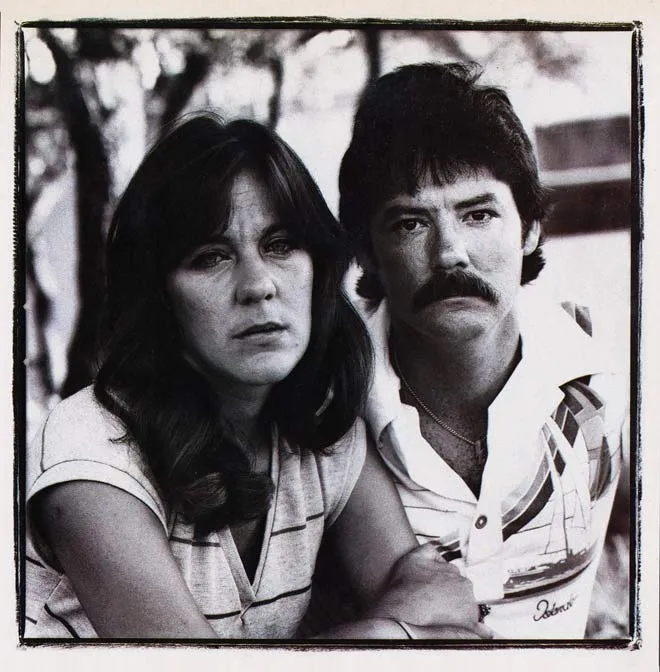
Jones was born on July 13, 1950, and immediately placed for adoption. Besides Jones, her new parents – Dick Jones and Gladys Jones, also adopted three other children, two older than Jones and one younger.
The family of six lived in a two-story house with 4 bedrooms in the suburbs of San Antonio. Dick was a businessman and also a professional gambler. He worked at an entertainment club and managed a nightclub, known for his lavish spending.
His lifestyle eventually brought great peril to the family. As the nightclub moved south, income plummeted drastically. Dick also tried his hand at running a restaurant but failed.
Subsequently, Dick started a business in sea advertising. For Jones, the moments she spent in the truck with her father while he set up billboards were rare happy times. Most of the time, Jones felt neglected, like a black sheep.
Jones called herself the “black sheep” of the family, even feigning illness for attention. At school, she was known for her rebellious, aggressive, and deceitful nature, further isolating her.
Jones was close to her younger brother, Travis. However, when Jones was 16 and Travis 14, he died in a foolish prank gone wrong. At his funeral, Jones screamed and fainted.
But before this tragedy could subside, another struck. In her senior year of high school, Jones’s father fell ill. He was diagnosed with terminal cancer and died at the age of 56, just 1 year after Travis’s death.
Many believed that these traumas made her increasingly odd.
The Nurse’s Journey
After her father’s death, Jones was deeply distraught. To fill the void left by the pain and loss, she considered marriage even though she hadn’t finished high school. This caused significant conflict with her mother.
Finally, after graduating, Jones married James Delany by falsely claiming to be pregnant, even though he was uneducated and irresponsible. Seven months into their marriage, James joined the navy, leaving his young wife behind. Jones immediately moved on to another man, making no secret of it. When James returned, they had a child together. But after 4 years of marriage, she divorced him while he was hospitalized due to an accident.
Financially, she relied entirely on her mother, so Gladys urged her to find employment. While Jones was studying to become a beautician, her older brother died of cancer, which made her fearful while working with hair dye, leading her to consider a career change. Having previously worked in the hospital’s beauty salon, training to become a nurse wasn’t too difficult.
During this time, Jones continued to have children with her lovers. Although she wanted to care for her two children, she had to send them to her mother for care while she worked. Witnessing doctors seemingly possessing extraordinary powers to heal patients, Jones suddenly wanted to be close to them, to be like them.
The Puzzling Coincidences
After completing her training to become a nurse, Genene Jones was licensed as a professional nurse, albeit not entirely satisfied with the lowest-ranking title in the nursing field. Evaluated as quite competent, Jones had no trouble securing a job at Methodist Hospital in San Antonio, Texas, USA.
However, just 8 months into her job, Jones was fired for overstepping her authority and displaying rude behavior towards patients. Jones then moved through several other places, each stint lasting a short time, until she finally settled in the pediatric intensive care unit at Bexar County Medical Center, Texas. It was from there that the tragedies began to unfold.
It all started with several children dying under unusual circumstances, with no apparent cause. Within a span of 2 weeks, 7 children died at the hospital, all while Jones was in the vicinity or directly responsible for their care. One child experienced seizures for 3 consecutive days, but only during Jones’s shifts.
Jones seemed to enjoy informing parents about their children’s deaths and pretended to show sympathy. A child on the brink of death would receive special attention from her. Gradually, some other staff members began referring to Jones’s shifts as “death shifts,” based on the numerous deaths that occurred during her working hours.
Furthermore, many of her peculiar actions drew attention. Whenever Jones handled a deceased body, she would often sing and express a desire to transport the bodies to the morgue herself.
When rumors surfaced suggesting that Jones might have had something to do with the children’s deaths, Head Nurse Pat Belko defended her. Pat dismissed the allegations as mere jealousy from envious nurses and refused to entertain them.
Suspicious Behavior
Then came a baby named Jose Antonio Flores, just 6 months old, admitted to the hospital with symptoms of fever, vomiting, and normal diarrhea. However, under Jones’s care, the baby suffered seizures leading to cardiac arrest, which baffled everyone.
It took hours for the doctors to stabilize Jose. They found that the baby was bleeding profusely and couldn’t determine the cause. Subsequently, they discovered that the baby had a bleeding disorder.
Although Jose was saved, he remained stable for only one night. Once again, he suffered seizures and bleeding. Early the next morning, Jose stopped breathing. The cause of death remained a mystery. Blood tests revealed that Jose had been overdosed with heparin, a blood-thinning medication.
Not long after, two resident doctors treating a 3-month-old boy named Albert Garza noticed signs of heparin overdose. When they informed Jones, as she was the nurse directly responsible for the child’s care, Jones became angry and stormed off, and the child gradually recovered.
No one had instructed Jones to act this way, and her superiors began to suspect her. After these incidents, the hospital tightened control over staff’s use of heparin, nurses were held more accountable, and tests were conducted more accurately. However, the tragedies didn’t stop there.
The Fortunate Survivor
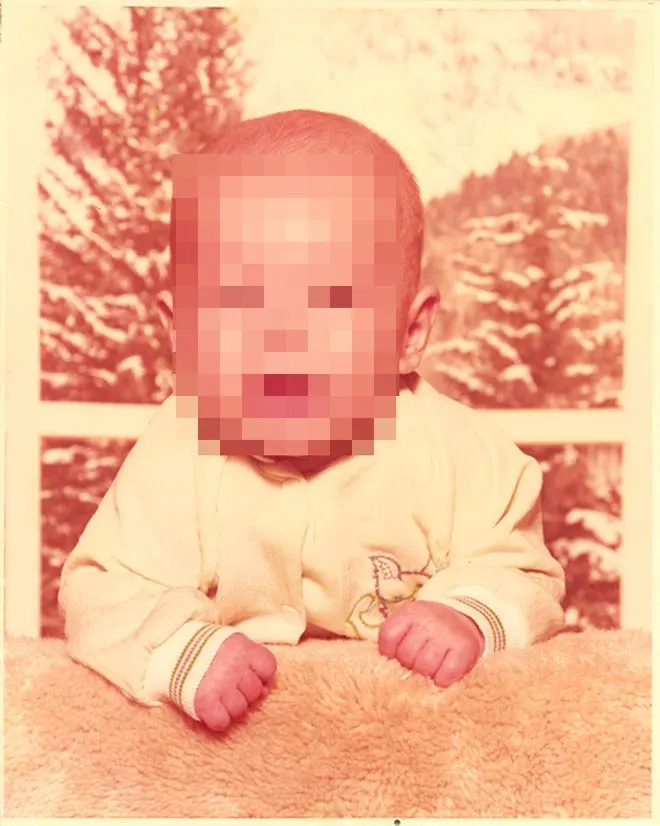
In November 1981, hospital management initiated an investigation in the pediatric ward, but it didn’t yield any significant results. They reasoned that the hospital, being small and struggling, shouldn’t attract public attention by delving into the issues raised about Jones by her colleagues. Instead, strict monitoring of heparin usage was implemented.
However, as heparin came under control, another medication emerged, starting with the death of 11-month-old Joshua Sawyer. Joshua was admitted with signs of cardiac arrest due to smoke inhalation from a house fire.
Doctors prescribed Dilantin for Joshua. While everyone hoped for his recovery, Jones suggested to Joshua’s father that it would be best to let him die because of severe brain damage. Subsequently, Joshua suffered sudden heart attacks twice and passed away. Tests revealed a large amount of Dilantin in Joshua’s blood, indicating deliberate poisoning, but the test results went unnoticed.
Many spoke out demanding Jones’s dismissal, but the hospital refused due to a severe shortage of nurses.
Next, another 1-month-old named Rolando Santos, undergoing treatment for sudden pneumonia, experienced seizures, cardiac arrest, and unexplained bleeding—all worsening during Jones’s shifts.
Rolando became severely dehydrated, urinating excessively. His condition improved during Jones’s 3-day absence, only to worsen upon her return. Tests revealed Rolando had been overdosed with heparin.
Initially, another doctor attended to Rolando, but when Jones took over, his condition deteriorated to the point of unconsciousness, with blood gushing from his mouth and dangerously low blood pressure.
Doctors saved Rolando’s life and transferred him to a closely monitored unit. Only with his parents’ care did Rolando’s health improve. Rolando was one of the lucky few to survive after being directly cared for by Jones.
The Quiet Exit
Finally, another doctor took a step further and reported to the hospital’s board about Genene Jones, the afternoon shift nurse who was killing children. He found a guide in Jones’s notebook on how to inject heparin subcutaneously without leaving a trace. He had evidence of what Rolando Santos had endured during Genene Jones’s shifts. The hospital objected but didn’t want to upset patients, so they took no significant action.
At this point, another child was sent to the pediatric unit to recover from heart valve surgery. Initially, the child progressed well but fell into a coma during Jones’s shift. His condition worsened and eventually died. Doctors were baffled and could only conclude the child’s death was due to infection.
Witnesses in the room where deceased children were kept saw Jones take a syringe, spray liquid on the victim’s forehead in a horizontal line, then repeat the action on herself. She held the baby’s hand and began crying.
Many doctors began to complain, and finally, a Board was convened to address the issue. An external investigative team also found issues. However, they refused to attribute all the issues to a single nurse.
Ultimately, the hospital decided to transfer Jones out of the pediatric ward to another department. However, Jones insisted on staying, resisting the change by resigning. This left many feeling relieved, and no one spoke of the mysterious deaths during her tenure.
From then on, the hospital’s mortality rate returned to a manageable level, but issues surfaced elsewhere, wherever Jones appeared.
Clear Crimes
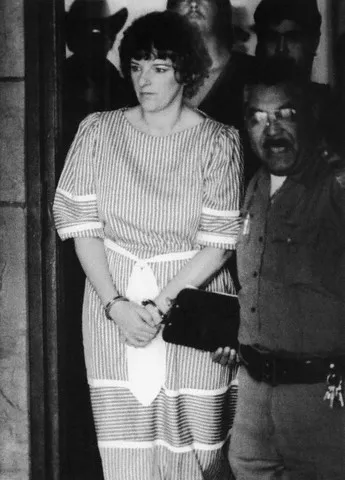
On October 12, 1982, a trial was held regarding 8 cases of children experiencing abnormal respiratory issues at Dr. Holland’s clinic, including one fatality, Chelsea McClellan. Chelsea’s body was exhumed for examination, revealing her death was due to succinylcholine injection. However, obtaining concrete evidence against the nurse proved extremely challenging as no one directly witnessed her actions.
In February 1983, a grand jury was convened to investigate 47 suspicious deaths of pediatric patients at Bexar Hospital, all coinciding with Genene Jones’s four-year tenure there.
Although there were numerous testimonies from colleagues regarding Jones’s behavior, they weren’t considered direct evidence. Dr. Holland provided evidence of what she found with succinylcholine vials in her clinic.
Kerr County grand jury reached the initial verdict: Jones was indicted for murder and injury to 7 other children by injecting muscle relaxants, facing a sentence of 99 years and a fine of $225,000. Later, in November, the jury convicted her of injuring 4-week-old Rolando Santos by intentionally injecting heparin into his body about 2 years prior, nearly causing his death. She remained a suspect in 10 other infant deaths at the hospital.
Unexpected Motive
A colleague of Jones revealed she desired more children in the intensive care unit. Through testimonies and analyzing Jones’s past, experts believed she had psychological issues. Jones administered lethal doses of various drugs to push children into critical conditions, positioning herself as a “savior” by attempting to save them.
The main motive behind this was recognition and admiration as an outstanding nurse. She sought the attention these acts garnered but couldn’t control herself, leading to increasingly severe actions and multiple child deaths.
Jones targeted children because they were entirely reliant on her mercy. She had free rein to create emergencies, moving from one crisis to another, yet, for quite some time, no one realized it.
The management at the facilities where Jones worked truly failed. They felt ashamed for knowing so much but failing to act.
Two Trial Sessions
There were two separate trial sessions for Genene Jones. The first trial took place on January 15, 1984, regarding the death of Chelsea McClellan, a pediatric patient who died after being injected with a muscle relaxant. The second trial occurred on February 25, related to Jones’s actions at Bexar Hospital.
The main motive behind these actions was recognition and admiration as an outstanding nurse. She sought the attention these acts garnered but couldn’t control herself, leading to increasingly severe actions and multiple child deaths.
According to courtroom statistics, 25% of children under Jones’s care had nearly stopped hearts, with around 10% at risk of death. However, Jones’s lawyers brought witnesses to testify that she was caring and responsible towards patients.
The grand jury deliberated for hours. At the end of the trial, Jones’s first sentence was 99 years for Chelsea’s murder. The second sentence was 60 years for injuring a 4-week-old infant named Rolando Santos by injecting a large dose of blood-thinning Heparin. Fortunately, the child survived.
Although Jones was suspected of intentionally harming up to 60 children during her time as a nurse at medical facilities in Texas from 1977 to 1987, she was only convicted of the two aforementioned charges. Medical staff had destroyed 9,000 pharmaceutical records, resulting in essential evidence being lost.
Seeking Justice
The combined sentences totaled 159 years, but there was still a possibility of Jones being released. According to the Texas Department of Criminal Justice, she was expected to be paroled on February 24, 2018, under a Texas law called Mandatory Supervised Release.
This law, enacted in 1977, allows all felons to be automatically released on parole after serving a portion of their sentence and demonstrating good rehabilitation. It was amended in 1987 to exclude violent offenders from consideration. However, prisoners convicted of violent acts before 1987 are still subject to this mandatory release law.
Therefore, Jones would only serve 35 years for her horrific crimes. This information deeply upset the relatives of the victims. “A serial killer who could walk the streets of America freely is the craziest thing I’ve ever heard,” said one mother whose child was a victim of the former nurse.
However, under the law, Jones could only be reconvicted if more people came forward to accuse her and provide compelling evidence linking her to the deaths of the victims.
Subsequently, relatives formed a group to protest Jones’s release. They tirelessly sought more victims of Jones to urge them to stand up and testify, hoping that the prosecution would reopen other murder cases to prevent this prisoner’s release.
Finally, these efforts paid off. On May 27, 2017, a year before Jones’s scheduled release, evidence emerged showing that former nurse Genene Jones killed Joshua Sawyer (11 months old) in 1981. According to the evidence, Jones had secretly overdosed this pediatric patient.
The newly found evidence helped convict Jones of Sawyer’s murder and ensured that she would continue to serve a life sentence. “Although it can’t compensate for the losses suffered by families with young children as victims of Jones, this verdict somewhat comforts them, as there will be no more children at risk of becoming the next victim,” a member of the protest group said.


